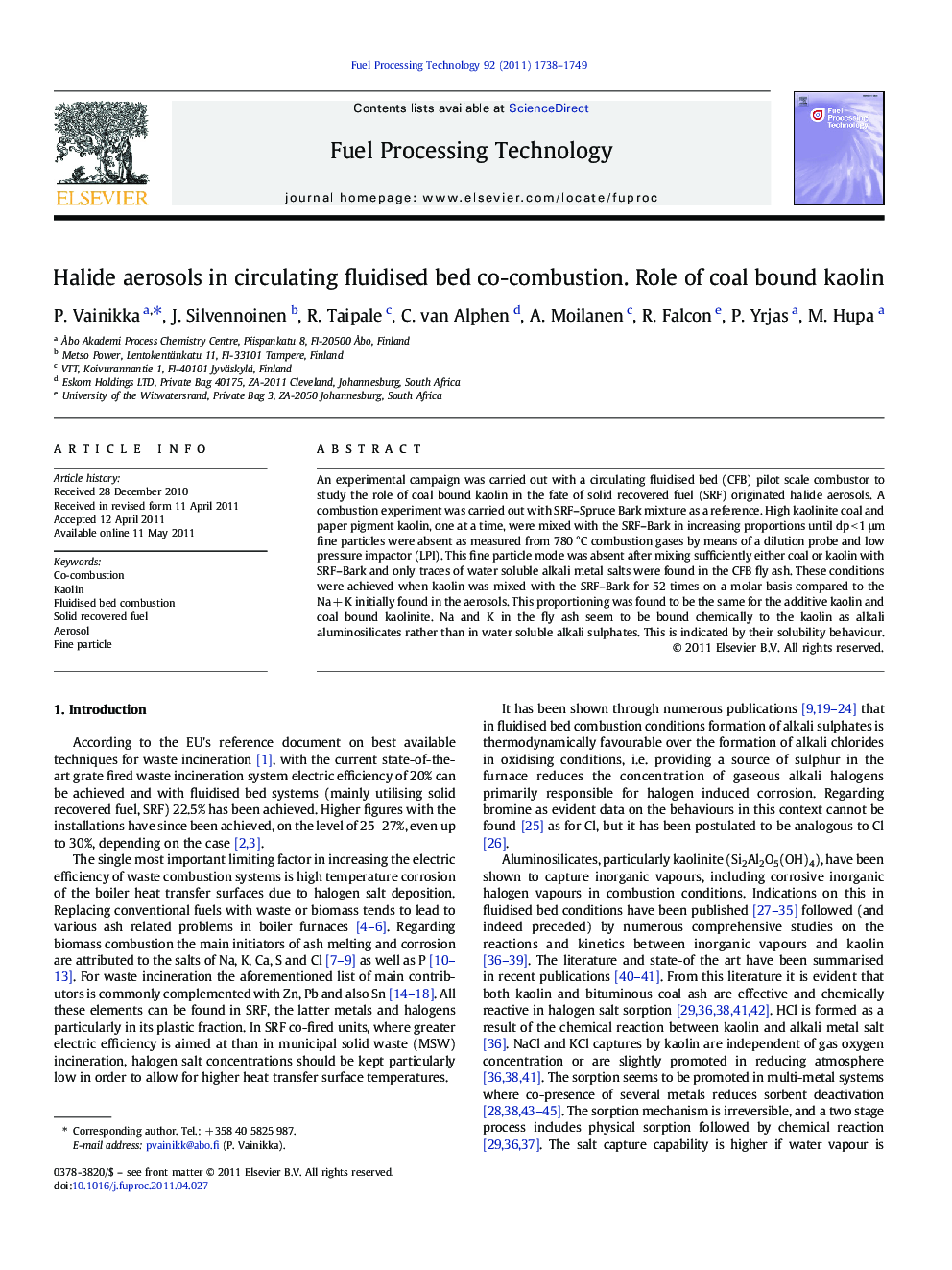| Article ID | Journal | Published Year | Pages | File Type |
|---|---|---|---|---|
| 210718 | Fuel Processing Technology | 2011 | 12 Pages |
An experimental campaign was carried out with a circulating fluidised bed (CFB) pilot scale combustor to study the role of coal bound kaolin in the fate of solid recovered fuel (SRF) originated halide aerosols. A combustion experiment was carried out with SRF–Spruce Bark mixture as a reference. High kaolinite coal and paper pigment kaolin, one at a time, were mixed with the SRF–Bark in increasing proportions until dp < 1 μm fine particles were absent as measured from 780 °C combustion gases by means of a dilution probe and low pressure impactor (LPI). This fine particle mode was absent after mixing sufficiently either coal or kaolin with SRF–Bark and only traces of water soluble alkali metal salts were found in the CFB fly ash. These conditions were achieved when kaolin was mixed with the SRF–Bark for 52 times on a molar basis compared to the Na + K initially found in the aerosols. This proportioning was found to be the same for the additive kaolin and coal bound kaolinite. Na and K in the fly ash seem to be bound chemically to the kaolin as alkali aluminosilicates rather than in water soluble alkali sulphates. This is indicated by their solubility behaviour.
► Kaolin in coal and pure clay have similar influence on halides in CFB combustion. ► Halide sorption by clay dominates over alkali sulphate formation. ► Kaolin addition resulted in absence of halide vapours. ► Halogen deposition was avoided with 10 times stoichiometric kaolin use. ► Kaolin addition reduces molten fraction in fly ash.
